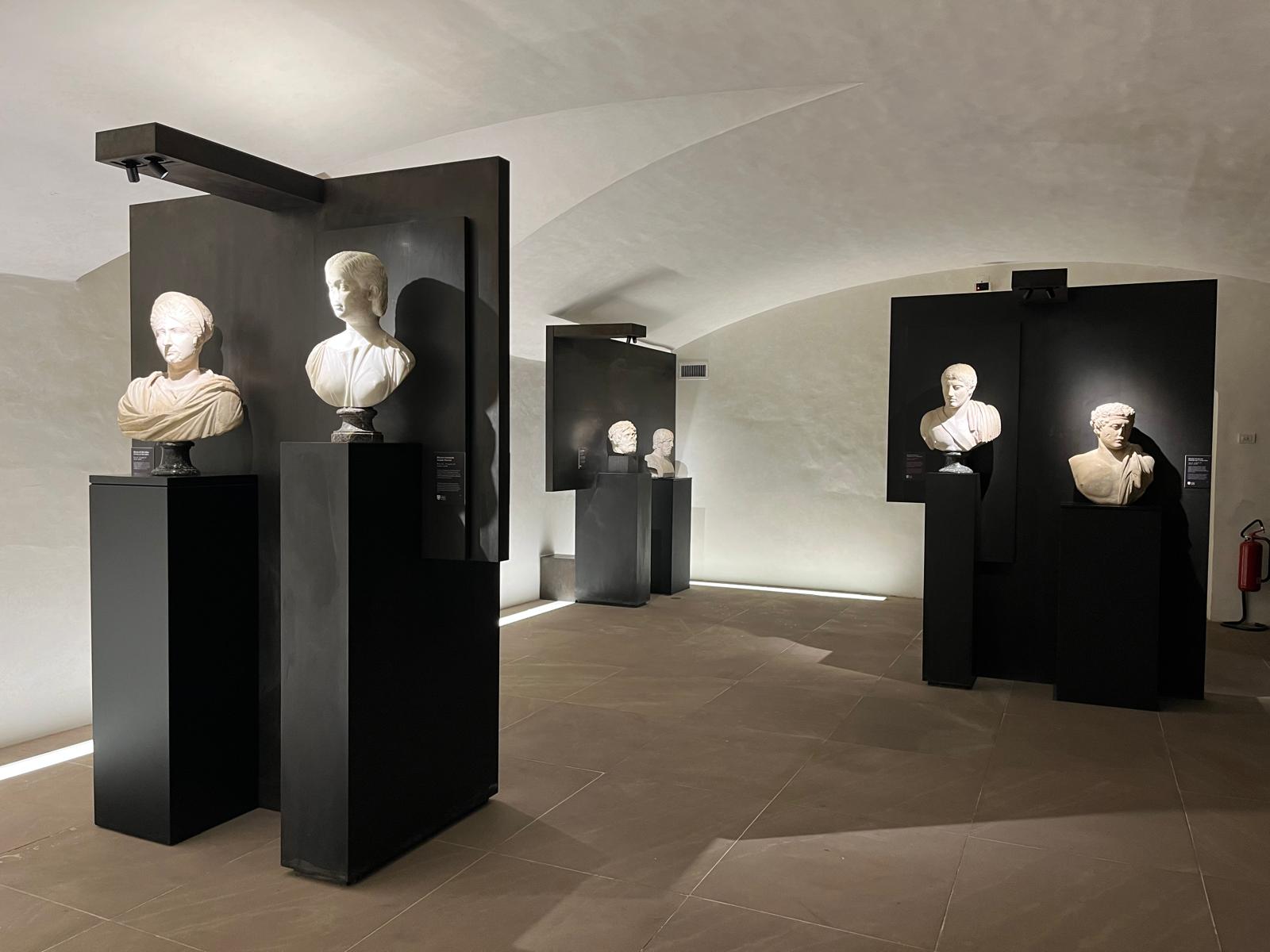Twenty years after it was opened to the public, the Marble Museum in Florence ’s Medici Riccardi Palace is presented with a new layout that reorganizes the entire exhibition itinerary inaugurated in 2005. The intervention, curated by the MUS.E Foundation and financed by the Culture Directorate of the Metropolitan City of Florence, also involved the first room of the archaeological itinerary located in the basement of the palace.
The rearrangement operation involved the introduction of new display bases and the redefinition of the lighting, designed to highlight the plasticity of the works and the architectural context in which they are placed. These aspects were accompanied by the updating of the information supports, which now include totems and bilingual captions in Italian and English, designed to accompany the visitor in delving into the historical-artistic content.
Particularly relevant was the work on the positioning of the ancient busts, some of which were restored on the occasion of the project. Thanks to the advice of Fabrizio Paolucci, curator of the Uffizi Galleries’ collection of classical antiquities, the works are now arranged according to a thematic criterion that promotes understanding of their provenance and significance. The new organization allows the public to follow a coherent narrative thread through sections devoted to historical figures such as emperors, philosophers, athletes and heroes of antiquity.
In addition to the main museum itinerary, the renovation also affected the first room of the archaeological itinerary in Palazzo Medici Riccardi. Inaugurated in 2019 with a layout designed by the Palterer & Medardi studio, the underground space now has new educational apparatus and is enriched with a brand new video documenting the main stages and results of the excavation campaign conducted in those rooms. This new audiovisual content complements the multimedia production carried out in 2019 by the Soprintendenza Archeologia, belle arti e paesaggio of the Metropolitan City of Florence and the provinces of Pistoia and Prato, helping to restore an even more complete picture of the stratified history of the site.

The Marble Museum displays a selection of antique sculptures belonging to the collections of the Riccardi family, passionate collectors of marble since the 17th century. The works, transferred to Palazzo Medici Riccardi from the villa of Gualfonda, constitute one of the most important testimonies of antiquarian collecting in Florence. When the palace was alienated to the state in 1810, part of the collection was acquired by the state, while other works remained inside the building and can be seen today between the Marble Museum and the exhibition route on the second floor of the palace.
The collection consists mainly of marble busts from the Roman period, depicting symbolic figures such as emperors, philosophers, heroes and gods. Among the subjects represented are Emperor Caracalla, Vibia Sabina, Euripides, Anacreon, Sophocles, and an athlete bust of particular plastic impact. Alongside these, there are also plaster casts of famous ancient busts: among them that of Augustus and that of Agrippa, whose originals were donated by Pope Sixtus IV to Lorenzo the Magnificent in 1471, along with casts of Caligula and Nero, purchased by the Riccardi in 1669.
The entire rearrangement aims to enhance the quality of the works and offer the public a more articulate and accessible reading of the heritage on display. The intervention has not changed the nature of the collections, but has significantly improved the usability of the spaces and the effectiveness of the museum narrative. The exhibition language, sober and documented, reflects the historical identity of the place and the value of a heritage that continues to reveal new elements of interest.


In the archaeological trail, located below the Renaissance building, it is possible to observe some two thousand years of historical stratification. The area has been the subject of a long excavation campaign that has brought to light significant elements of Florence’s urban past. These include a portion of the original bed of the Mugnone stream, a tributary of the Arno, now buried. The remains of a late antique burial ground, wall structures from different periods, pavements, wells, stairs and cisterns can also be seen.
In the Medici period these spaces were used as stables, while in later centuries they were used mainly as cellars and service rooms. The architectural layering preserves traces of continuous modifications and adaptations, including furnace structures and heating pipes dating back to the 19th century. The tour also includes a selection of archaeological finds unearthed during excavations, displayed according to thematic and chronological classification. These include ceramic fragments, metal objects, and other artifacts documenting daily life at the site in different eras, including the Roman period.
 |
| Florence, Medici Riccardi Palace's marble museum gets a makeover 20 years after opening |
Warning: the translation into English of the original Italian article was created using automatic tools. We undertake to review all articles, but we do not guarantee the total absence of inaccuracies in the translation due to the program. You can find the original by clicking on the ITA button. If you find any mistake,please contact us.